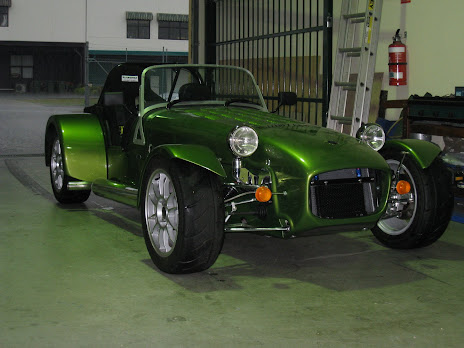Whilst Frank generously offered his workshop space, with its added benefits of…
a) being clean
b) having all the tools you could possibly need
c) having air conditioning
d) having other clubmans there as references
e) having Frank there as the ultimate reference
…part of the reasoning behind the clubman was to build something with Dad. He’s a frustrated engineer at heart I’m sure, and the challenge for both of us to build this thing is not insignificant. So we’ll see how that goes in Dad’s shed.
When I say shed, perhaps I should say hanger. Dad felt that an ordinary shed just wouldn't do. Keep in mind that my parents are on about 100 acres of bushland out the back of a small country town in WA, so space isn't an issue. Add to that my Dad's collection of "things that may be useful someday" and you can see why he needs the space.
I can't criticise my Dad's magpie tendencies too much, as no doubt all sorts of useful stuff will suddenly appear out of nowhere during the build, saving the 20km trip to the nearest town to buy something inane. It's also useful because it means there’s ample room to build a car – all right, a fleet of cars – in there. But I will insist on not using anything from the massive collection of rusty nuts and bolts, now matter how many cents I can save by using an old one.
So we shifted a heap of stuff around, I took away some old things I’d put in there when I left Australia 10 years ago (man, there were some bad fashion choices – with the Red Cross now, thankfully), and we made a space. The whole place needed a bit of a clean to remove the most obviously dust piles, plus we’re no doubt going to have to clean the cobwebs off the car every now and then.
The final steps were to add lights and some ventilation – it gets pretty hot in there. Thankfully there’s a fridge for beers / softdrinks etc – essential for any Aussie shed, but a few fans will be put in to blow a bit of air about….
I think at some stage, the car will return to Franks for some of the trickier / heavier work – for example, fitting the engine and drivetrain. We just don’t have the equipment to be moving engine blocks around. But the early stages will all be done down south.





